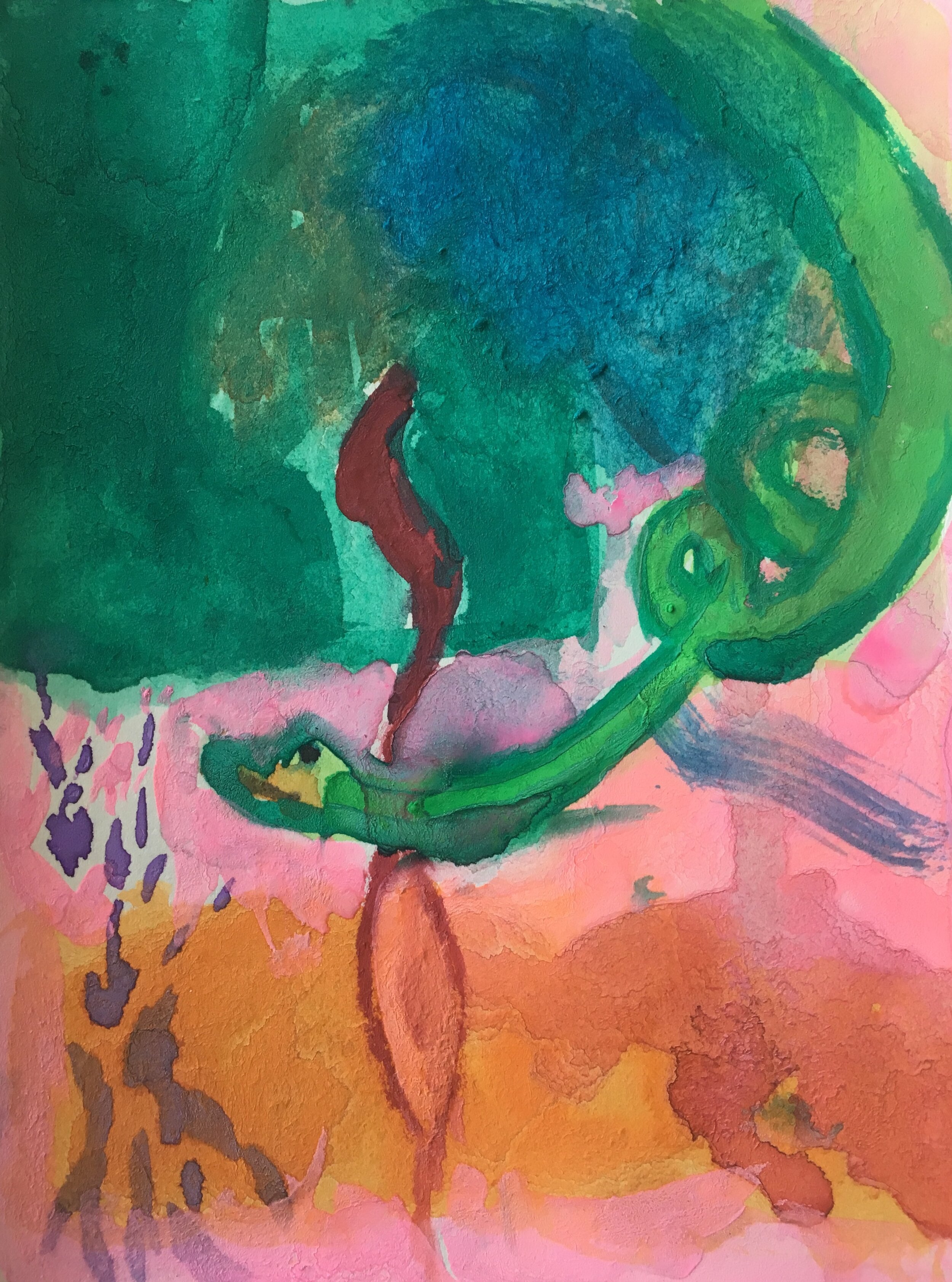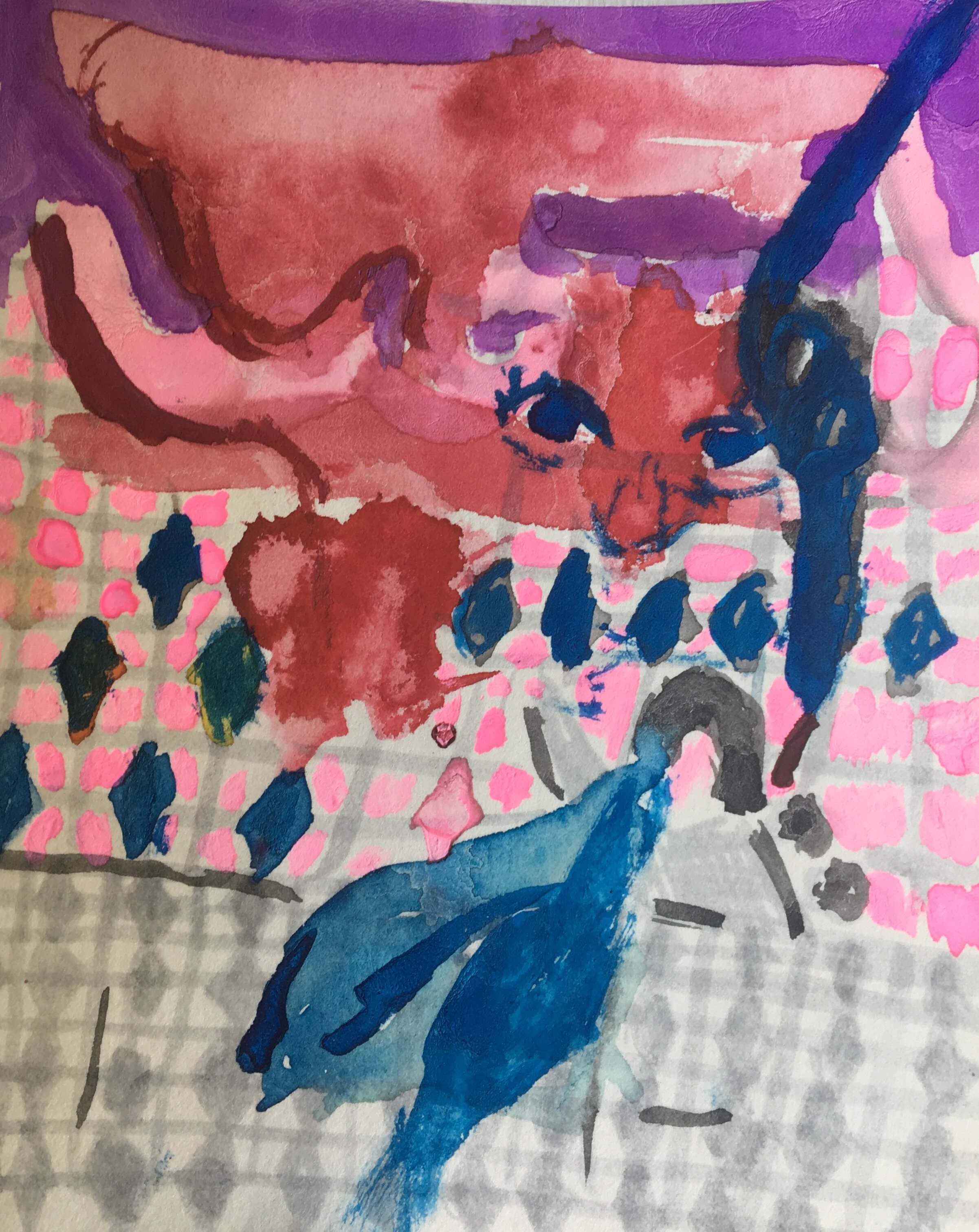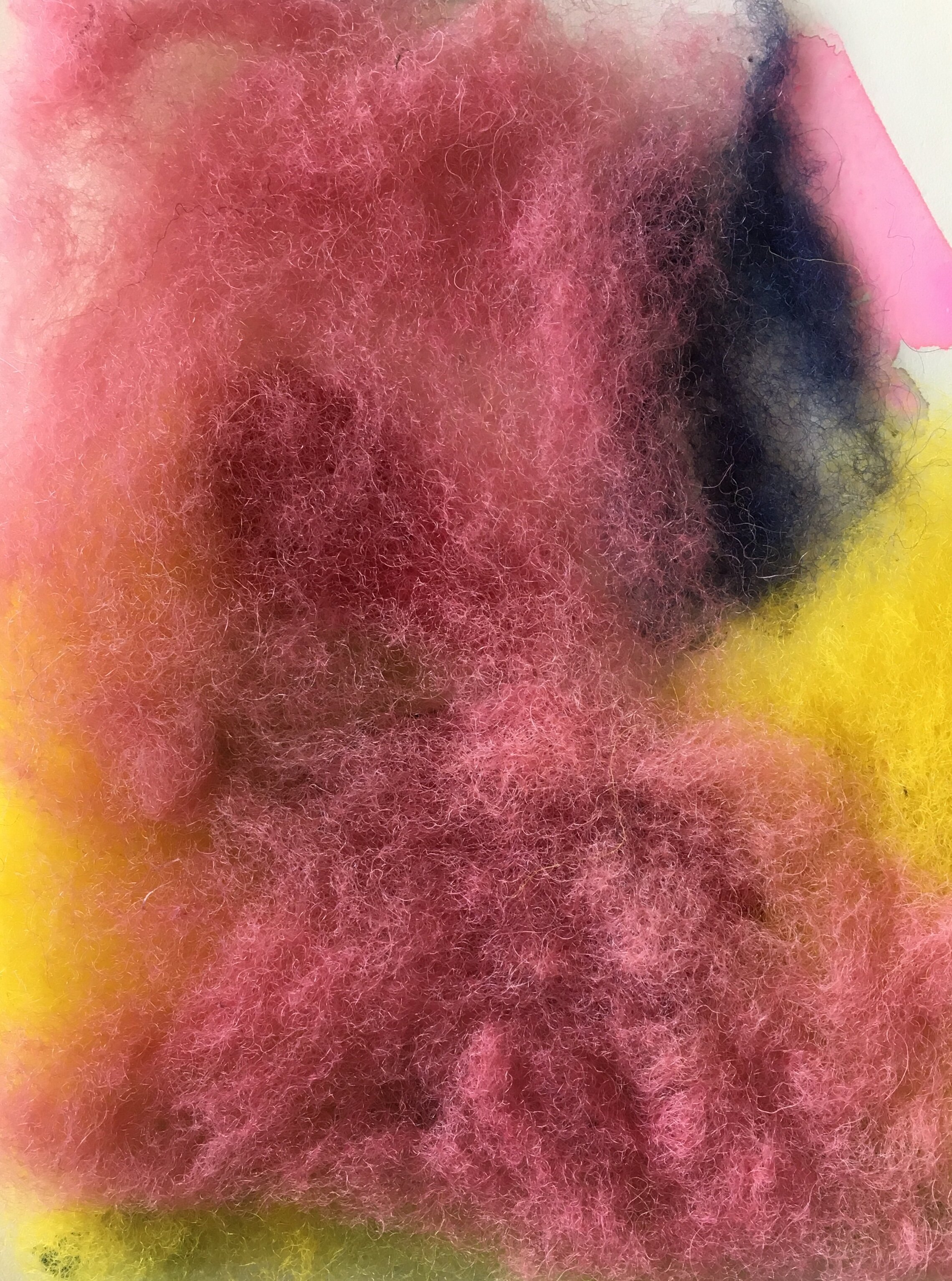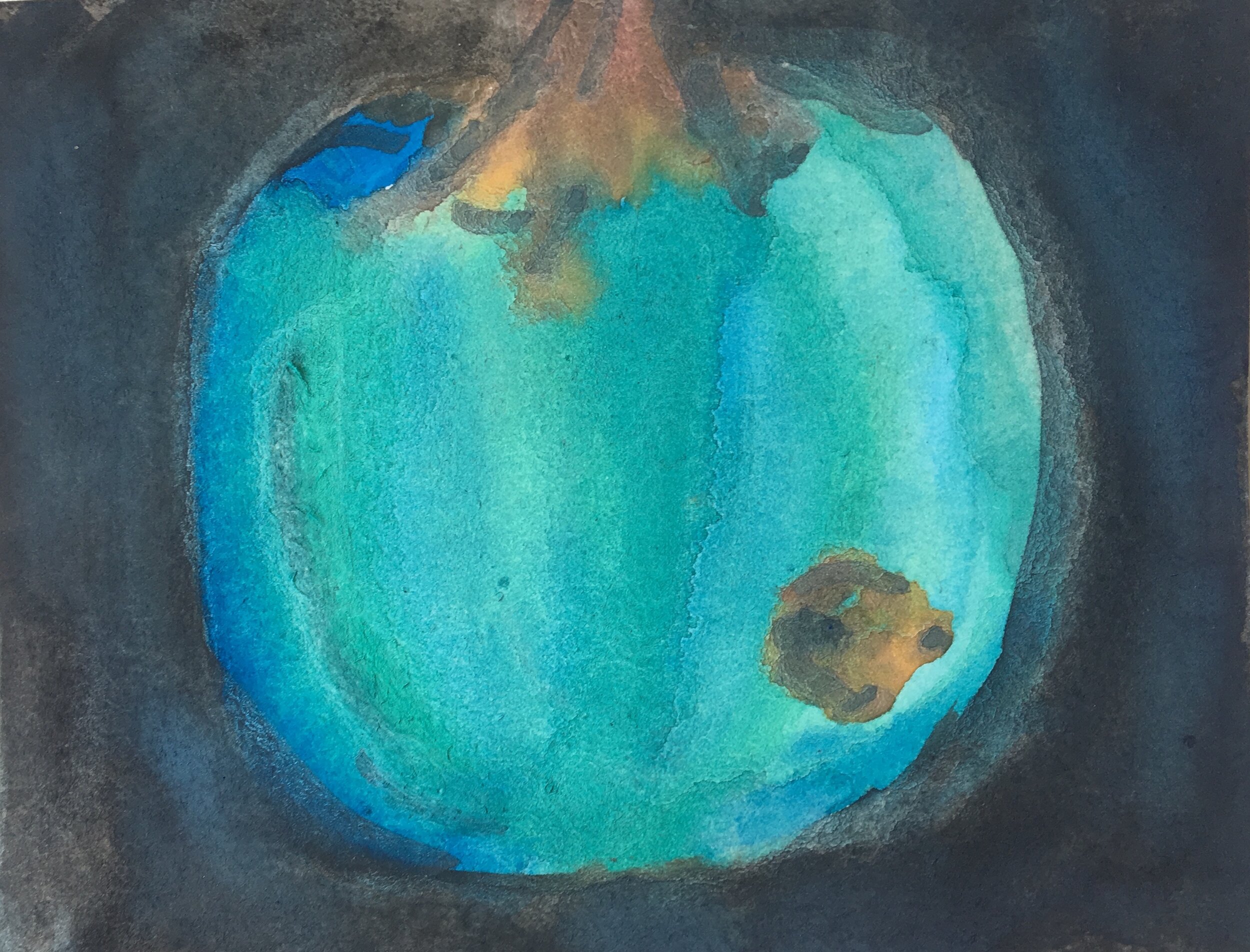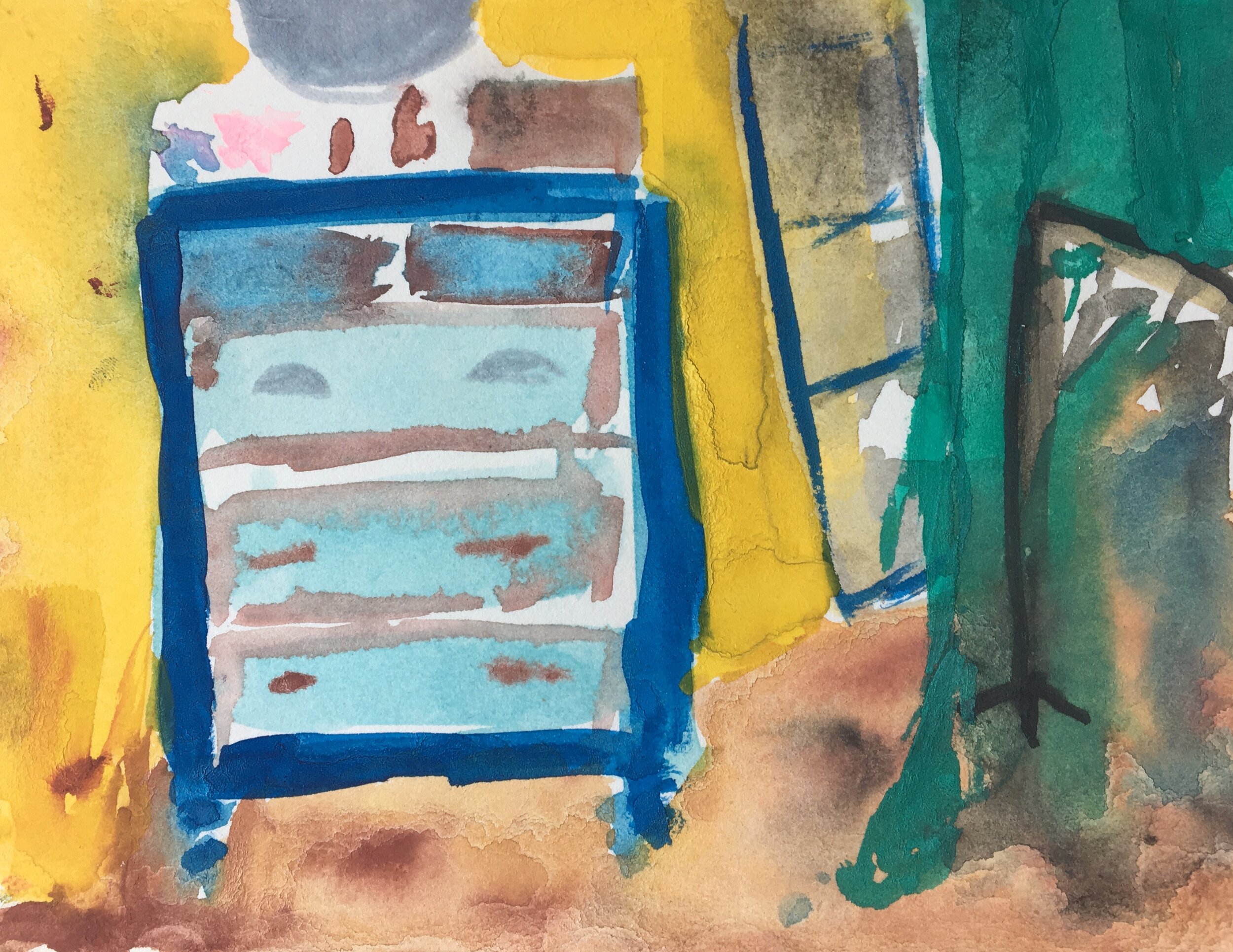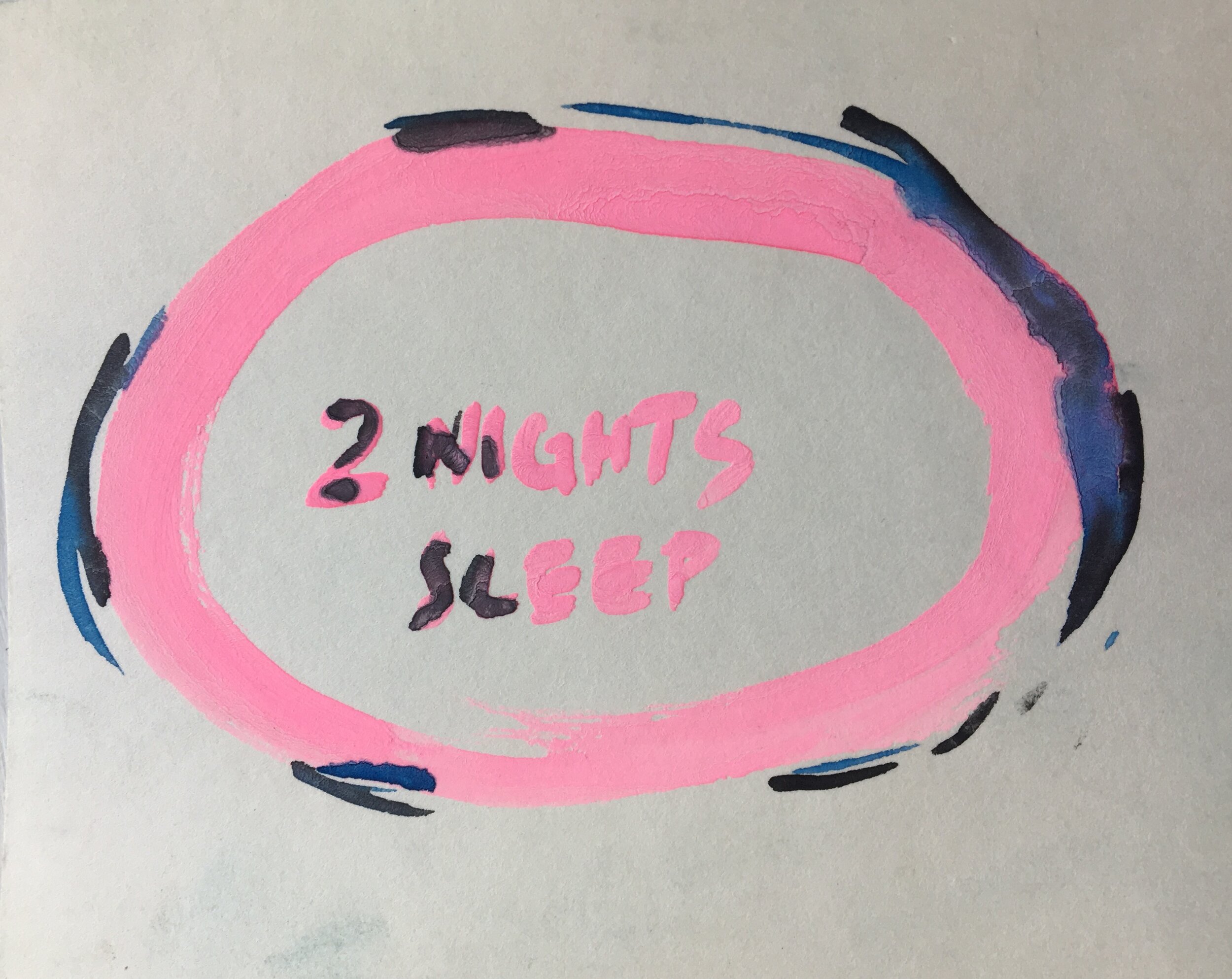PORTFOLIO: "let me remind you"
“let me remind you”
This is a triptych telling the story of my experience of Place Corps through its beginning (1), middle (2), and end (3) by way of reminders. Though the story is told in a sequence the reminders are interconnected and cyclical.
Throughout this year, learning has felt like a collection of reminders - of what I’ve known and forgotten, what my body knows deeply and intuitively, or what ancestors have known or will know. What plants and other life around me know and can reflect back to me. An embrace lifting each other up and into harmony. More evidence of our connectedness. Reminders form a learning that is
not static with knowledge that is not mine or yours. We have been learning from all of it in cycles of reminders; bodies, stars, ancestors from the beginning of time. It is flow. This is how it has felt to learn that we need each other, first. But my body knows this. And when I am reminded it rings with satisfaction. Oh, I’ve just forgotten. Affirmation from the womb. We need each other.
the triptych and “honoring in breach”
I’m thinking of the triptychs I have witnessed and learned in medieval christian cosmology - their use of symbols and visual storytelling along the form of a trinity as a powerful channel in crafting a new story for my european ancestors, transforming their cosmologies of land-based spirituality and community. Transforming power and connection through story and the power of three. In learning more about this history, I came across a 1984 New York Times Art View article authored by Grace Glueck titled “The Triptych Lives on in Modern Variations,” a review of the exhibition “Contemporary Triptychs'' at Bard College. Of it, she writes: “In short, the old-style triptych is honored here more in the breach than in actuality.”
As I consider what a return to painting might mean for me, a return both in my own lifetime since childhood and so many lifetimes before mine, what does it mean to honor in breach?
Honoring asks about remembering. Remember the practice of painting. Remember this scale of time? Remember that you can slow down to witness and channel the flow of energy and creativity through us. Remember that its big. Remember possibilities of communication. Remember the stories and the ways we told them. Remember how we believed them.
Breaching reaches inside and past and forward. It offers a third way. Remember the power that this practice can and has been done differently. Remember that we can we do it so that this vital energy connects us here, reminds us that we are alive, interdependent, necessary.
If the stories that I have learned are that we are individuals, that we are valued differently, that we are all the same except some, that we should distrust the stories inside of us, then the same questions, the binaries, the decline in vital energy will become of them that rupture and disconnect. Honoring in breach asks: how can we remember, and how can we imagine different stories? How can I imagine what collective visioning, and remembering, might look like in my community?
Collective visioning reflections:
I. Something you’ve been reminded of recently
II. Imagine what you need
III. Imagine a ceremony of decay
IV. Imagine a different way of telling time
V. Imagine connection through transition
1) reminder:
reminder:
when I couldn’t feel home
not in front of or behind me
when I couldn't feel breath flowing
or taste
when the phantom
cool night sky Stars
tingle on my tongue
i forgot that they are all here and
all here are breathing
when I forgot to breathe
the brambles held to the fabric of my clothes
their raspberries brought deep red to my skin
and the sumac reached in between
the menacing iron fence posts
unconcerned, looked me in the eye and said
let me remind you
there is life where i didn’t think possible
when i say i always knew
what i mean is, in my bones of earth
(ecoduction, reminder of home)
I mostly grew up in West Park, New York, on shapeshifting land under and around a house built over lots of years, subject to change at the scale and speed of machines and specialized trade. Patches of new growth forest cleared and lawns leveled flat, dropping off at points and making clear the quick and blunt contortions of construction. This is also where the smell of fall is stunning and irreplicable and floods in memories across years.
Immediately to either side lived older women, dynamic and resilient in their own ways, one a dear friend who grew into family. Her home existed for years as I knew it unfinished, only subflooring, impermanent lighting, its outside wrapped in the stuff of yellow spongy insulation, with no discernible trajectory of completion. Each year a big tree drops daring green citrusy orbs along the already unnavigable driveway.
Our geographies together were of strategic manipulation, impermanence and non-closure, contaminated borders. We grew whole lives within them, mirroring these patterns and lighting sparks of possibility at their edges.
Young brothers and friends and I spent lots of time engaging with this place with an attentiveness and curiosity that felt reciprocal and held. With tall grasses and large branches we built whole worlds, trading systems with stones and services, notes and signs on flat rocks, small sturdy shelters. I don’t remember how we figured to build those, but they lasted throughout the winter under inches of snow and until the field was razed for construction again in the spring.
Those strong, miraculous homes were work, but it felt like play to create something that we imagined. We met caves along the river to climb along nimbly and shelter us, small meadows to sit and watch the birds, pokeberries to mash for bursts of purple ink, gentle brambles of black raspberries, and moved confidently along and around a small creek, seeking out frogs, creating adventure tasks among us, swinging from vines until they snapped lightly, and leveraging goods through pulley systems across fell trees. Laughing across the iteration of the groomed lawn as it exists today playing legendary games of flashlight tag.
Together we were at the edges creating ways we wanted to be together inside a world that seemed confusing and big and routines that seemed predetermined. Creating worlds together the way that we wanted.
We cultivated rigorous imagination practices that were diverted as we grew, but stayed a sturdy taproot in this place. In Highland, throughout school, we were so near to orchards, the river, big swaths of preserved land in the Shawangunks. These direct and intentional relationships with the land and other life dissipated, to me they felt overwhelmed by a cultural geography of sterile and severed product that came from far away. An intentional absence of knowledge of the land, its history and lineages of formation and stewards, food and community that could nourish us, and of healing and generative ways of being together.
Still, the work my closest friends created together when given room amid these paradigms as brazen, perceptive teens gives me grounding and hope for the future. Still this feels like home.
Now, slightly north in the valley at the Place Corps house, it feels like we’re doing this work again to support and grow life, and imagining together what is and might be. Here old friends and colleagues have told me that the geography of my face has changed. When I learned the magic of Staghorn Sumac here, tasted its lemony seeds, it was like we had danced together once long ago but never were introduced. In so many of our practices here it feels like that, like an alignment and meeting in a place I dimly but deeply remembered possible. And in creating after our collective imaginations, it feels like play again.
(blog posts, reminders of journey)
2) weaving:
weaving:
within it we say
we complete each other again and again
this changes color in the sun
it is of our earth and energy
is beautiful
in the way of sacred
asking, what do we need?
if we need it
if we sense the pieces
if we make it with love
if it becomes love
it will be ceremony
woven
and not separate from us
(practices, when there is no disposal)
This year our living practices experimented with living zero-landfill. We kept a bulk pantry stocked, tended four compost piles, tried to source most fresh fruit and vegetables directly, grow with the land and process our own foods, and reduce packaging whenever possible. Actions meant as radical application of care to throwing away and practices I'd acclimated to of waste and disposal. The packaging we did acquire was cleaned and organized by type, and sorted first in our kitchen and gradually into our basement. We introduced friends and visitors to our waste as it was dear to us. And it is. It has been necessary for our nourishment. It too is of vital connected energy.
I am imagining what it is to celebrate our packaging, and reflecting on the ways that we do. And by celebrating our packaging, celebrating each other and what it means when we understand there is no disposal. What we do when we understand there is no option of disposability in relationship, no course through which we will become whole when it is a practice to devalue. How did we learn to complete each other?
By staying together in ways I wasn't told possible. By reminders slowly, in tension, that working together is the process and the product. That working in a relationship might require a speed much slower and a scale much deeper than we have been taught to work. By practicing timescales that seem new altogether but are old at their core. By learning about relationship, practicing it as ceremony: How do we listen? How do we tell stories and communicate feelings? Who and where are our lineages? What are our values and what do they mean in practice? All together how are we implicated, woven?
(independent study: daily reflective calendar)
3) transition:
transition:
we met here
as the life outside on earth dimmed
as you remembered less
she wanted to see you
to feel your breath
to ground you here and beyond
let me remind you
your hands that weave and wove through her
would weave through me
we two were silent
what was your voice
pillowy
it is somewhere in mine, woven
and in your eyes
the tenacity of care
as angitia charmed
as i remembered less
the outside life on earth dimmed
and the inside swirled, we meet again
all three, and many more to be counted
and more to come
we say, as a lullaby
and I am swept up
as if I have known all along
this is not known, and it is possibility
this is not a test but practice
we are with you
thank you
thank you for making with your hands
thank your hands for carrying me
we say in voices without words
woven and connected,
possible
we make it possible
(nonna e angitia)
I met my paternal grandmother once in this body, when I was one year old and she was much older. I have an image in my mind of meeting her - I don't know if it's one that I've seen in pictures or that I've assembled from stories. The image is of her lying in bed, her memory faded over years, and my mother holding me over her. Other family members surround us, our mouths are both closed, our eyes are fixed on each other. I imagine this meeting as a bridge for each other while we are both navigating transitions between things that are known and unknown, this world and beyond.
I came to her bedside just this once, and she's come to me throughout this year. In sewing, weaving, and making with my hands. In dreams at times when my own memory faded. We meet and our ancestors are united here together again. In times of transition, she reminds me that circles of giving and receiving and time are connected.
The possibility of telepathy, or of communicating without words was not unknown to us then or now. Angerona was with us. And we carry ancestor Angitia in our eyes, who knew the snakes so well and found harmony with poison to make medicine. She was practiced at this. She is teaching me. We remind each other what is possible when we have each other.
(place story project: tapestry co-created with my mother and grandmother)
Invitations from place story project presentation:
[draw a flower]
[draw yourself breathing with a flower]
[pass it to a neighbor to create with without covering over, draw the most recent dream you can remember]
[pass it to a neighbor to create with again without covering over, envision generations into the future, wherever you want to land or whatever you desire to see]
gratitude and lineages
I feel so much gratitude for all of the beings whose reminders inspired and held me throughout this year, many that I know personally, and many who I know some part of from the words, message, song, art they’ve shared in books, or the internet. The words and invitations of this project come from reminders and knowledge shared by all of my cohort members, and all of the educators who have brought love and care in such abundance to our learning together at Place Corps, alongside members of the Hawthorne Valley Community and Farm, the Good Work Institute, and the Omega OCSL. The land that has nourished us here, the cows. My mother,
grandmother, father, nonna, aunts, cousins, zio, zia, and all of my ancestors. Practices of imagining with my ancestors from Alexis Pauline Gumbs and her work in Dub: Finding Ceremony, this is what it sounds like (an ecological approach), Octavia’s Brood, Pleasure Activism, and in her blog. Strega Botanica (Samantha Blancato)’s stories and craft. adrienne maree brown and Autumn Brown and their podcast How to Survive the End of the World. Patience Gray’s writing in Honey from a Weed. Alessandra Belloni’s recorded Tarentella lessons. So many more in my mind and heart as this ever grows.
“let me remind you”







